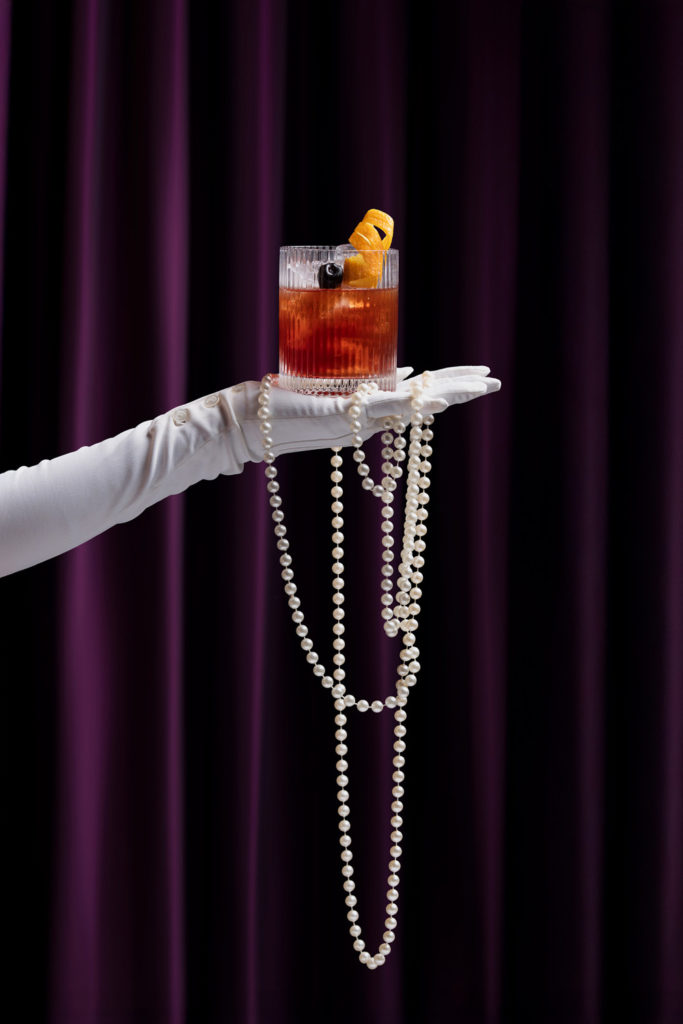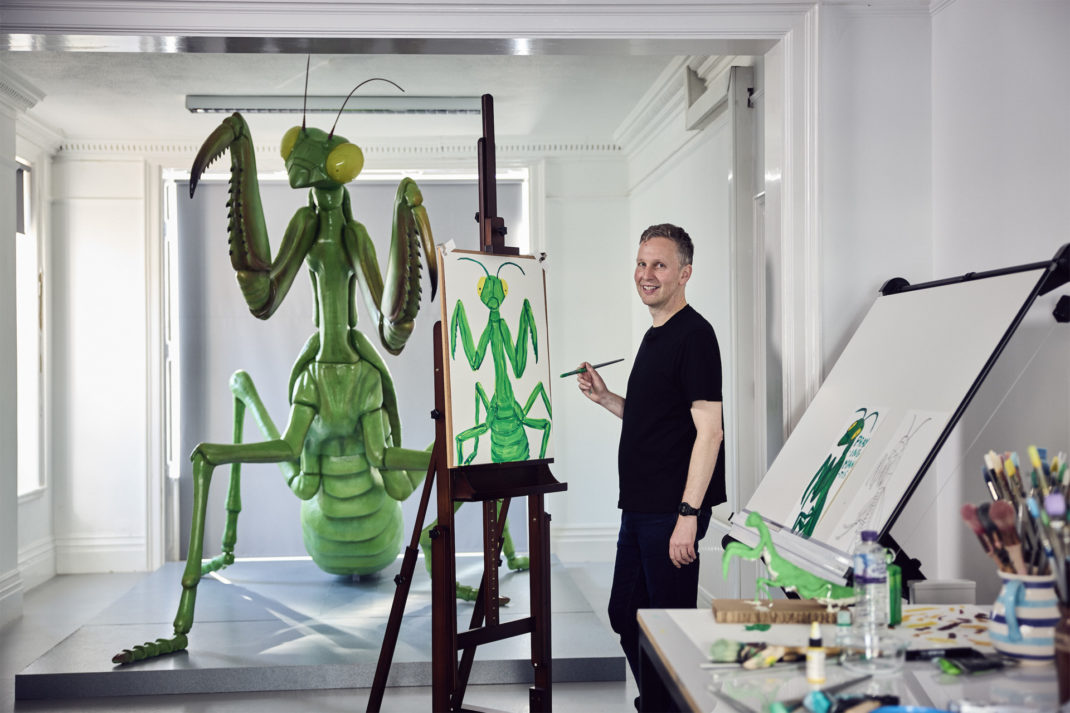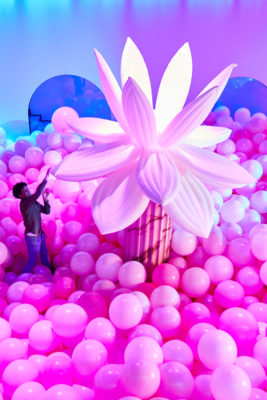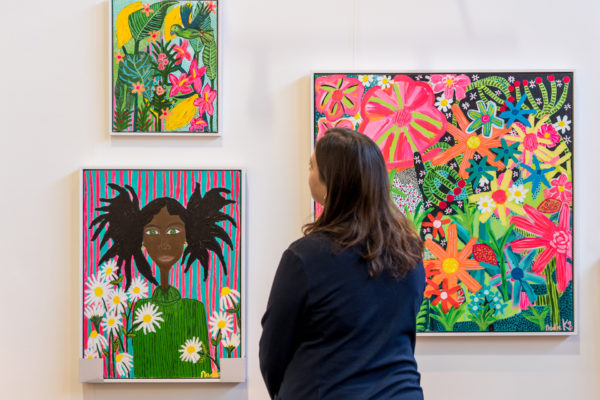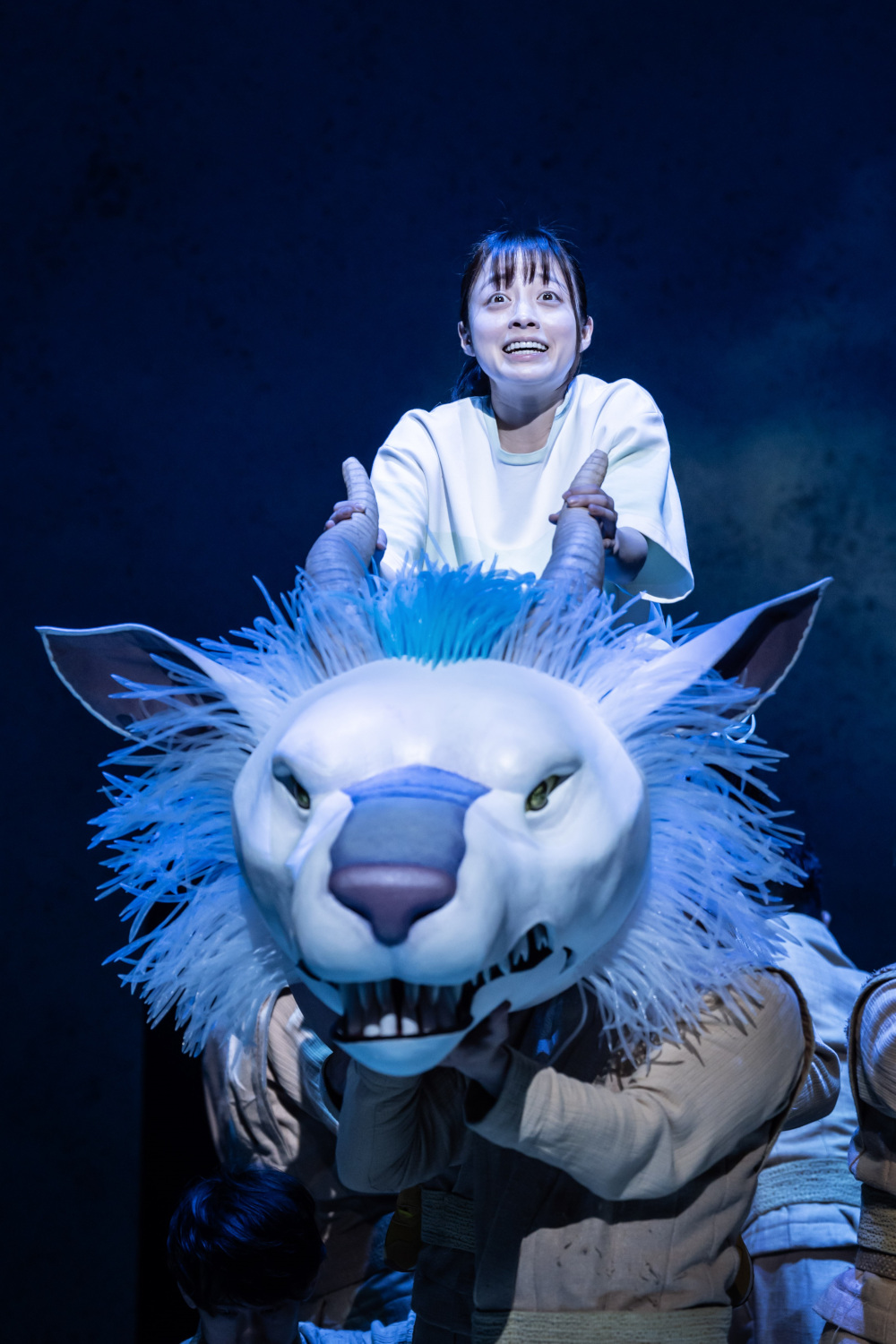
Spirited Away At The London Coliseum Is A Treat For Studio Ghibli Fans
By
1 year ago
This production perfectly balances nostalgia with fresh wonder
When Studio Ghibli’s Oscar-winning film Spirited Away made its theatrical debut to Japanese audiences back in 2022, it sold out in just four minutes. It’s the second stage adaptation from the renowned animation studio – the first being the RSC’s My Neighbour Totoro – and is one of the most anticipated arrivals on the West End this year. But with such a fantastical reputation to uphold, not to mention thousands of fans to please, will Spirited Away live up to London audiences’ expectations? Long-time Studio Ghibli fan Charlie Colville heads to the London Coliseum to find out.
Studio Ghibli’s Spirited Away Is Now On In The West End
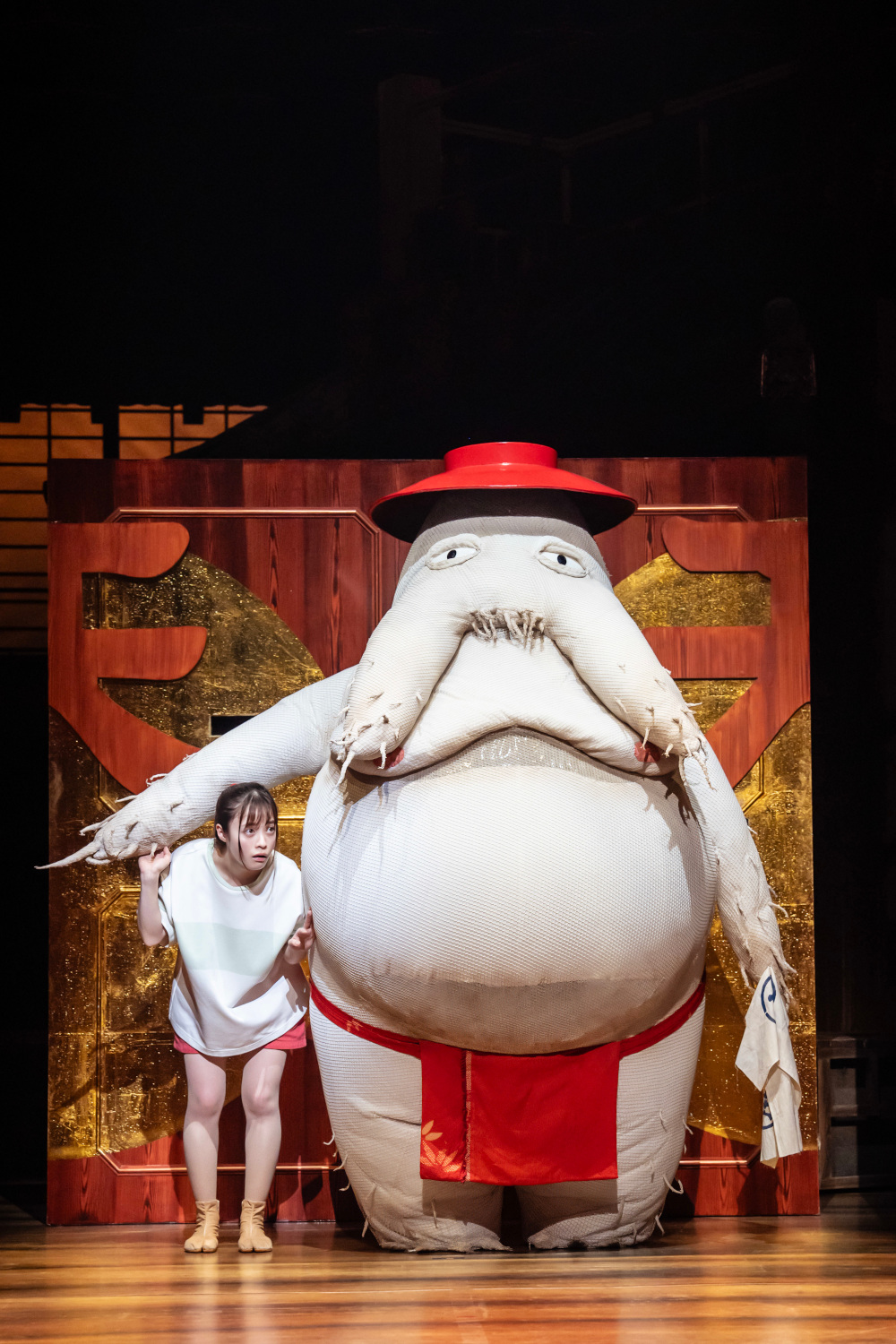
SPIRITED AWAY | Kanna Hashimoto as Chihiro (c) Johan Persson
Since its founding in 1985, Japanese animation company Studio Ghibli – as well as its founders Hayao Miyazaki, Isao Takahata and Toshio Suzuki – has become a master in global storytelling. The worlds constructed onscreen, filled with strong characters, stunning landscapes and gripping storylines, are fiercely loved by fans all over the world; and now, the studio has started to take its stories from screen to stage.
Despite its long history and global success, Studio Ghibli has only released 22 films in its lifetime, with the proverbial jewel in the studio’s crown being 2001’s Spirited Away. The film, which bagged Best Animated Feature at the 75th Academy Awards, follows Chihiro, a 10-year-old girl who is accidentally whisked away to the Japanese spirit world while moving to a new home with her parents. She is quickly tasked with saving her parents when they are turned into pigs, and must undergo various trials while working in a bathhouse for spirits.
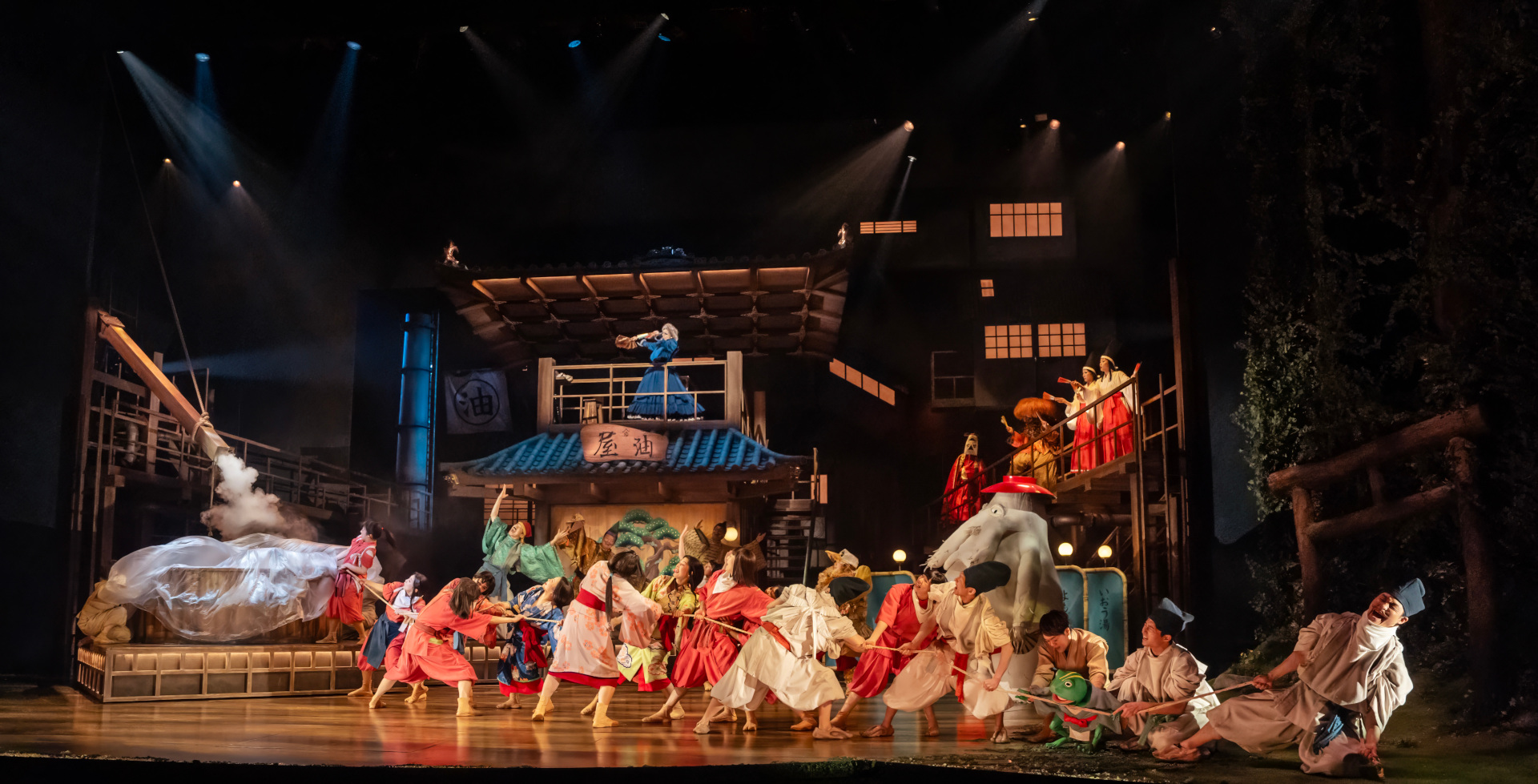
Company of SPIRITED AWAY (c) Johan Persson
It’s a pretty fantastical plot, one which its theatrical counterpart sticks to closely. Adapted for the stage by John Caird and Maoko Imai, Spirited Away provides the same significant plot points (the story thankfully wasn’t cut down for theatregoer consumption), characters and whimsical musical arrangements (performed by a live orchestra and adapted by Brad Haak from Joe Hisaishi’s iconic film score) that made the original film such a hit – while also offering a deeper, physical look into the world of Studio Ghibli.
This is ultimately what sets this adaptation apart from the original film. While Studio Ghibli is renowned for imbuing its animation with depth and detail, theatre gives its storytelling a more tangible quality that is aided by human movement, climbable sets and lively costumes. It creates an experience that feels like stepping through the screen into the story itself.
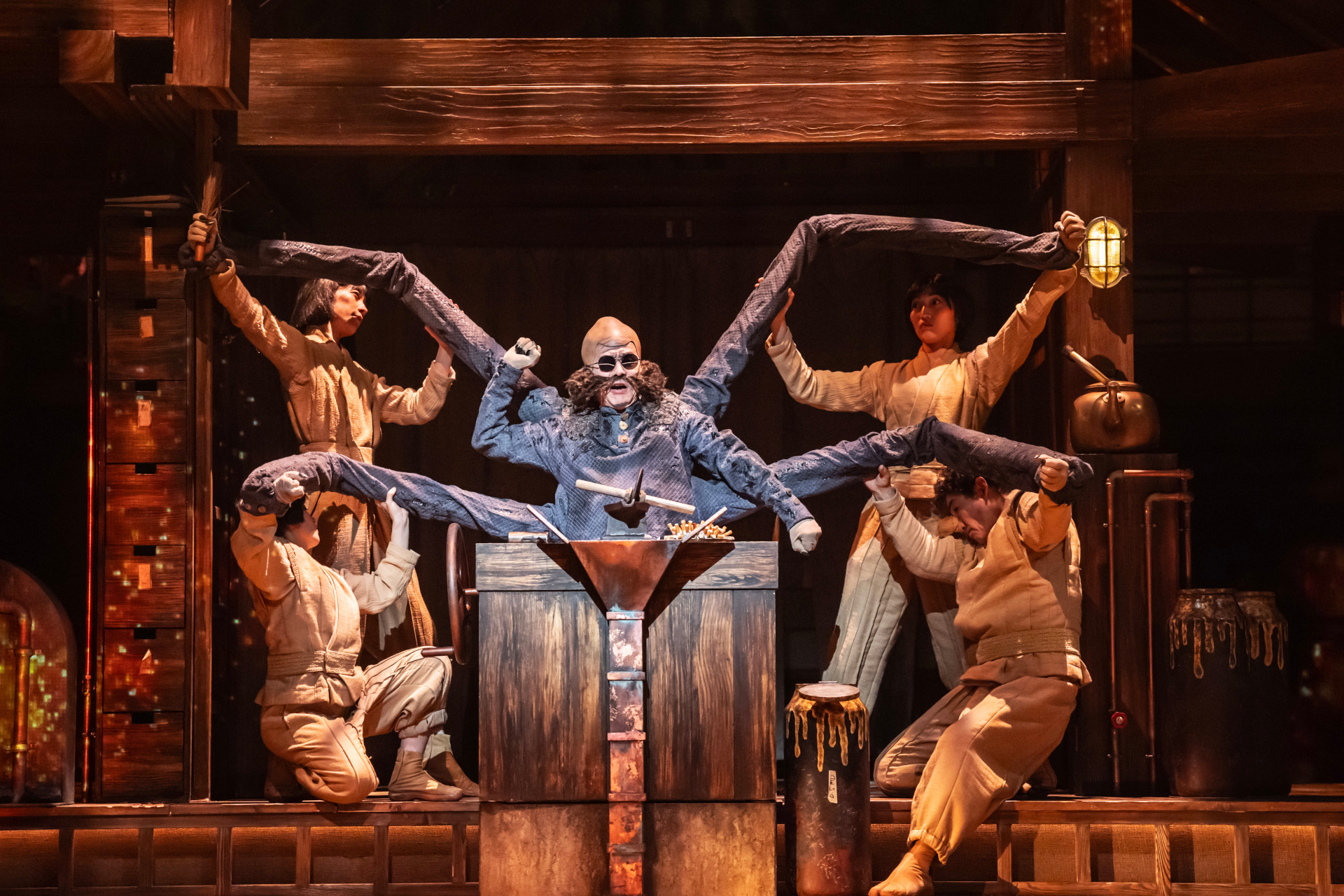
SPIRITED AWAY | Tomorowo Taguchi as Kamaji (c) Johan Persson
The characters themselves are also given so much more spirit (pun intended) on stage. They take on the grandeur of animation with flair, with exaggerated gestures, colourful personalities and humorous quirks that lend themselves well to holding the attention of theatregoers. Chihiro (a role that will shared by four actors throughout Spirited Away‘s stint in London) embodies the character of a young girl flawlessly, despite her actor being in her mid-20s; she whines and shuffles her feet when she doesn’t want to do something, loudly cries without care who is watching when she sees her parents in a pig pen and earnestly does her best to show the other staff at the bathhouse that she can pull her weight. The audience quickly finds itself rooting for her success.
Spirited Away‘s non-human characters are similarly show-stealing. Yubaba, the witch who simultaneously runs and rules the bathhouse, is characterised by sweeping gestures that give her a powerful larger-than-life status – aided quite fantastically by the ginormous, fragmented face that descends over her person when she gets angry. We also have the eccentric, spider-like boilerman Kamaji (who Chihiro fondly refers to as ‘grandpa’ by the end of the show) whose enthusiasm for Chihiro’s quest is peppered with laugh-out-loud bouts of Japanglish. And, of course, there’s Chihiro’s guide Haku; a spirit forced to work for Yubaba, he takes on dance-like movements that allow him to sweep across the stage in an echo of his silvery blue and white dragon form.
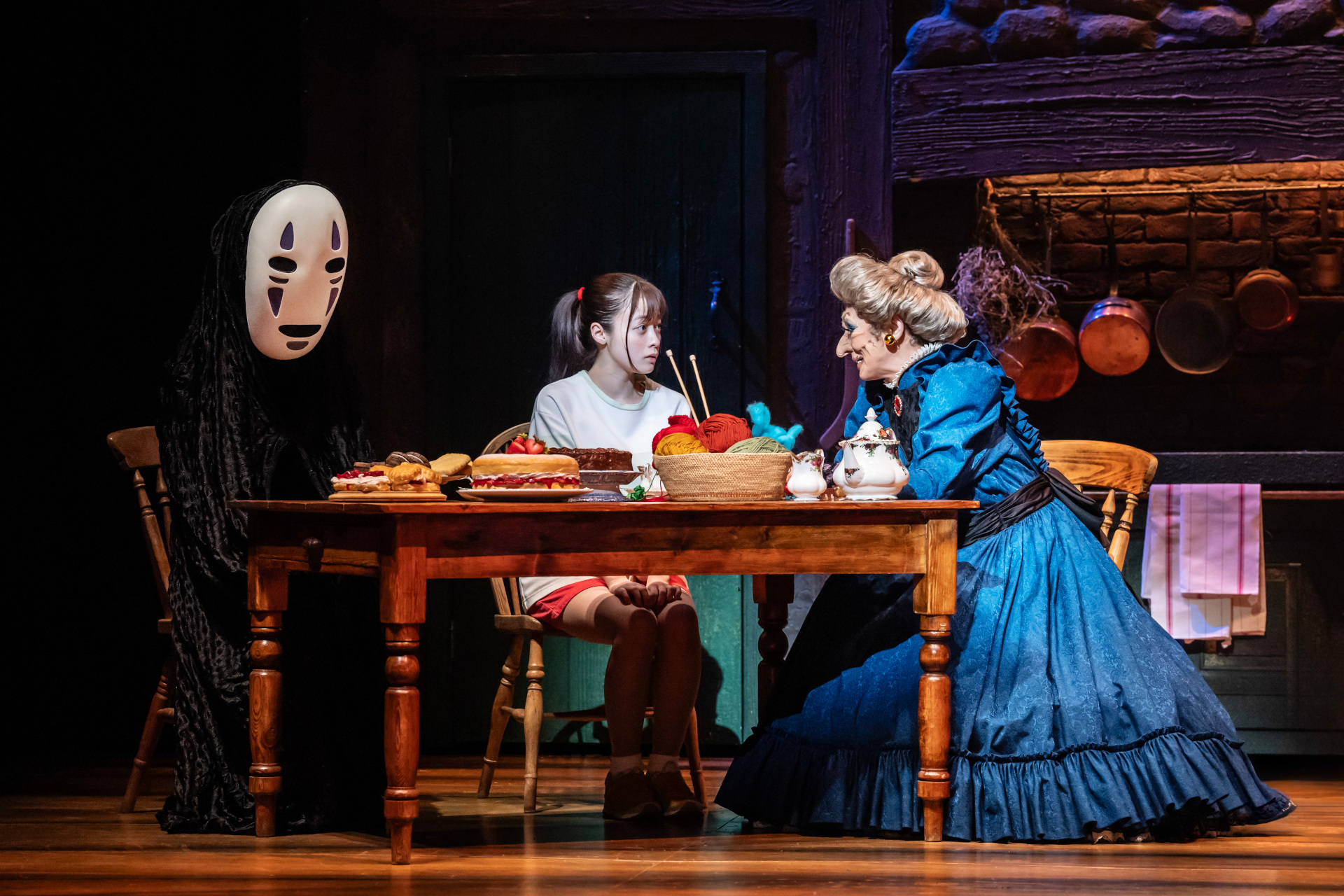
SPIRITED AWAY. Hikaru Yamano as Kaonashi/No-Face, Kanna Hashimoto as Chihiro and Mari Natsuki as Yubaba/Zeniba (c) Johan Persson
Another performance of note is Hikaru Yamano as No-Face, the ghostly spirit that sneaks through the bathhouse causing trouble. Those who grew up watching Spirited Away will likely associate this character with nightmare fuel, and his stage counterpart does little to deter from this image. Yamano is fluid on stage, slipping through scenes with unnerving quietness (he sneaks up on the audience just as much as he does on Chihiro) that immediately makes you wary of him. And, as he goes on to eat several employees in the bathhouse in his desire to track down Chihiro, he takes on an even more terrifying dimension, with several shadow-clad actors convening to create one giant, bloated No-Face sprawled across the stage.
This also brings us to the show’s other highly successful mode of storytelling: puppetry. Fans of the film have discussed at length how director Hayao Miyazaki was inspired by traditional forms of Japanese theatre to aid his storytelling in Spirited Away, and the stage production really goes back to these roots with elements of Bunraku, or puppet theatre. War Horse alum Toby Olié and his team spent four years perfecting the puppets for Spirited Away, crafting wide-eyed soot sprites on wires, mouthy frogs in traditional Japanese dress, huge pig heads with drooly noodles slipping from the snout and multi-segmented serpentine dragons that zip across stage (and whirl into the distance in kite-like miniature versions).
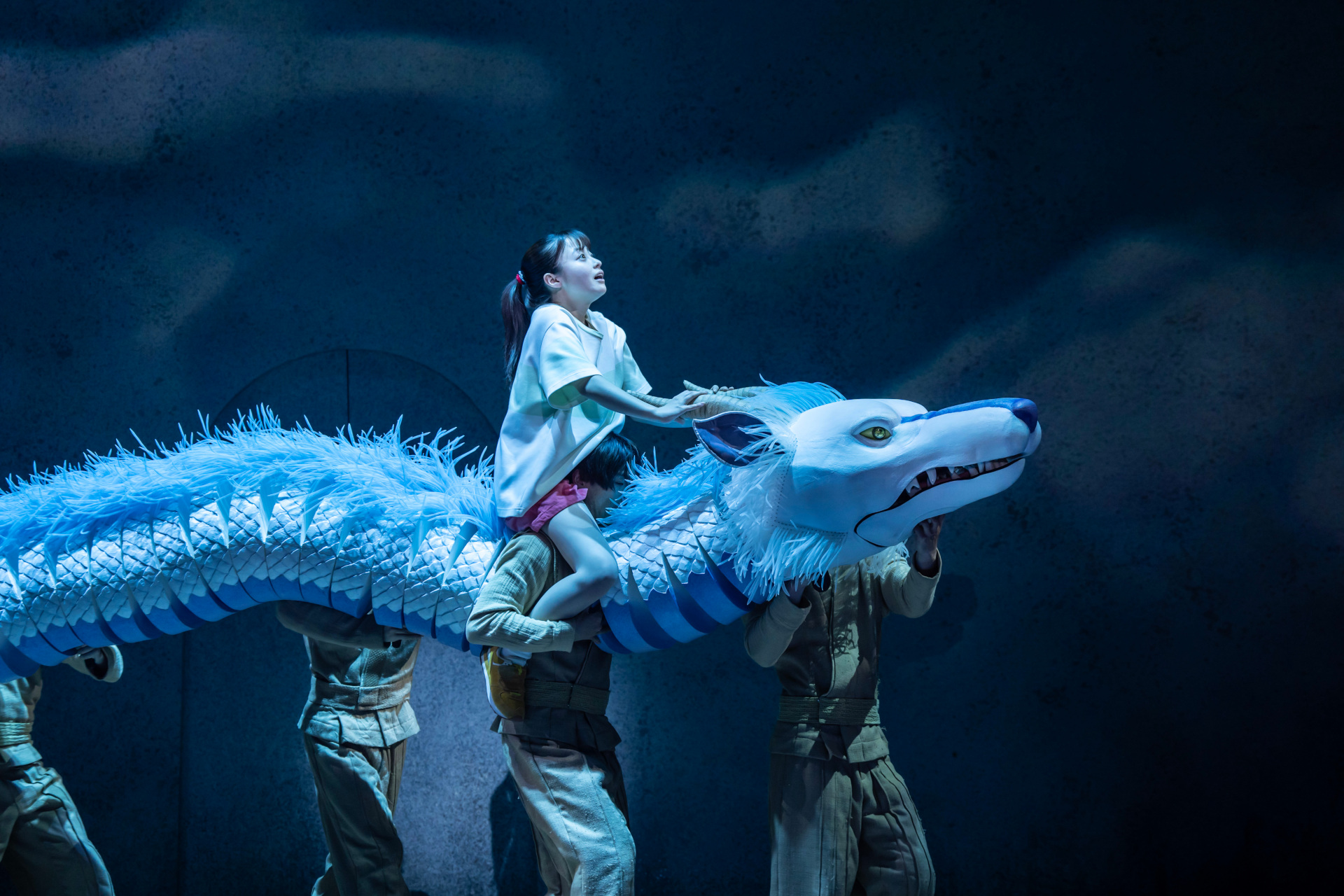
SPIRITED AWAY | Kanna Hashimoto as Chihiro (c) Johan Persson
The set, created by Jon Bausor, is similarly key to the show’s magical feel. Responding to the original films numerous backdrops, it shifts from scene to scene in a chameleonic fashion thanks to a rotating central structure that morphs from food stall to bathhouse to boiler room to Yubaba’s office (and so on). What it can’t achieve with a rotating set is solves with the help of a simple screen and projector, driving audiences across the Japanese countryside in the back of a car, zipping across the ocean onboard a spirit train and flying through the night sky with dragon-Haku and Chihiro. More dynamic scenes, such as when Haku leads Chihiro to safety in a secluded corner of the bathhouse, are solved with tightly choreographed sequences involving moving doors and dancers – making the stage a living, breathing entity that moulds around the movements of its actors.
One element of the show that offered initial cause for apprehension was the language barrier. It’s a tricky process to get a foreign language product to an English-speaking audience, but Spirited Away seemingly pulls it off with ease. Leaning into the Coliseum’s operatic apparatus, the show is accompanied by subtle subtitle screes to the left, right and above the stage that translate the characters’ speeches. These subtitles seem to be set to a timer, which the cast follows almost seamlessly, bar for rare moments of over-speedy line delivery. While perhaps not the best set-up for those sat close to the stage (you might find yourself snapping your head back and forth between the subtitle screen and the action onstage), it has very little impact on the enjoyability of the show itself.
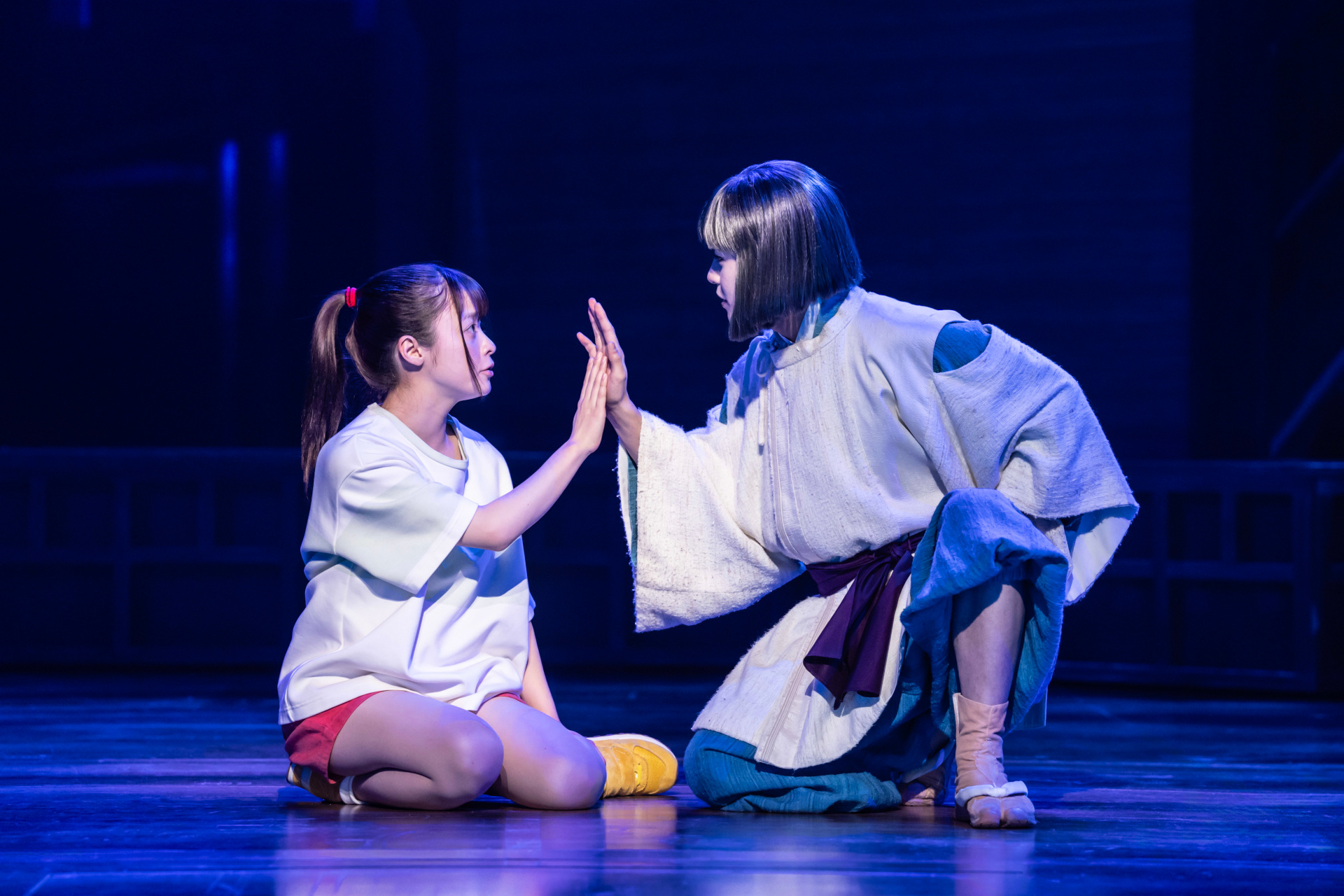
SPIRITED AWAY | Kanna Hashimoto as Chihiro and Kotaro Daigo as Haku (c) Johan Persson
With all of this under its belt, communication is not a barrier to those not fluent in Japanese nor who haven’t seen the original Spirited Away. For those who have, it’s unapologetically nostalgic, and evokes the same child-like wonder that you likely first found yourself brimming with on your first watch of the film. It more than lives up to the expectations put upon it by previous Studio Ghibli theatreland hit My Neighbour Totoro – surpasses them, even – and is primed to draw a crowd of both loyal and fresh-faced fans.
The Final Word
If there’s one show you see this summer, make it Spirited Away at the London Coliseum. This theatrical adaptation seems to follow in the footsteps of the film itself by breaking the language barrier with vibrant storytelling that brings fantasy worlds (and the characters within them) to life.
Where Is Spirited Away Playing In London?
The theatrical production of Spirited Away is currently playing at London Coliseum.
How Long Will It Be At London Coliseum?
8 May to 24 August 2024.
How Much Are Tickets?
Tickets start from £28, including booking fees.
How Long Is The Show?
Spirited Away is three hours total, including interval.
How To Get Tickets For Spirited Away In London
You can book your tickets at londoncoliseum.org
Images: Spirited Away at London Coliseum (c) Johan Persson

